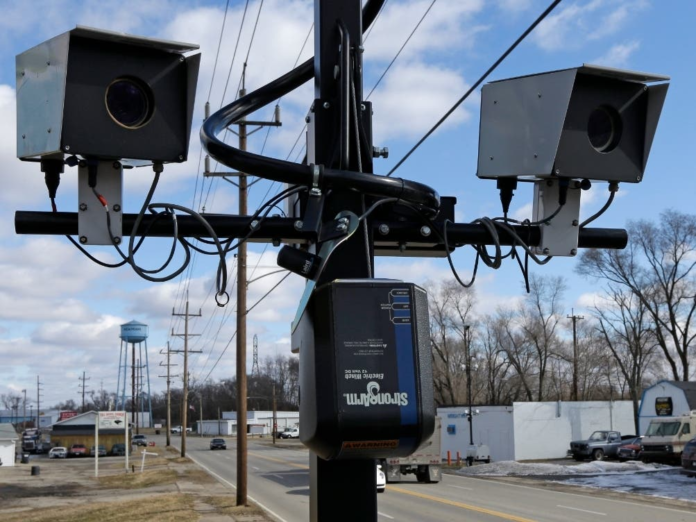Politics & Government Speed Safety Camera Bill Stalls In Minnesota Legislature The city of Minneapolis and the Minnesota Department of Transportation have shown strong interest in using cameras for traffic enforcement. Replies (3)
Speed cameras are aimed at U.S. Route 127, in New Miami, Ohio, Feb. 25, 2014. (AP Photo/Al Behrman, File)
ST. PAUL, MN — More than 15 years after the Minnesota Supreme Court put the kibosh on Minneapolis’ “photo cop” program, the technology might be making a comeback. But not this session.
A bill introduced in the Minnesota Legislature in February — which would legalize the technology — has stalled without a hearing in the House and Senate transportation committees. Rep. Steve Elkins, one of the authors of HF 2098, told Patch Wednesday that he expects the bill to receive a hearing next year.
Contrary to common belief, the state Supreme Court has never said that traffic enforcement cameras are unconstitutional. It did rule in 2007, however, that Minneapolis’ photo cop ordinance violated a Minnesota law requiring all traffic regulations to be uniform across the state. But legislation passed at the state level wouldn’t have that problem.
Under HF 2098, the owner or lessee of a vehicle that is caught going above the speed limit by a camera system is guilty of a petty misdemeanor and must pay a fine of up to $80. Exceptions include if the vehicle was stolen at the time of the violation. Police cars, fire trucks, ambulances, and other authorized emergency vehicles are exempted if they are “in the performance of official duties at the time of the violation.”
The legislation was put forward after both the city of Minneapolis and the Minnesota Department of Transportation showed renewed interest in traffic-enforcement cameras. Why speed safety cameras? A 2022 MnDOT report found that crashes in work zones are increasing statewide, and “simply lowering the posted speeds will not change driver behavior, because drivers will reduce speeds only if they perceive a need to do so.”
Between 2018 and 2020, Minnesota recorded 7,403 work zone crashes. Of those, 122 of the crashes caused a death or a serious injury to either a worker, driver, or someone else, authorities said. And Minneapolis officials say that between 2017 and 2021, an average of 150 people each year suffered life-changing injuries or were killed in traffic crashes on the city’s streets. In 2021, speeding was a factor in 65 percent of fatal crashes, according to officials. The Federal Highway Administration says speed cameras can reduce injury crashes by up to 47 percent on busy streets. The National Highway Traffic Safety Administration gives automated enforcement its highest effectiveness rating. Speed cameras also eliminate the need for “officer interaction,” a Minneapolis report noted. The city said it will prioritize equity and privacy in any speed camera program it implements.
Minneapolis was involved in crafting HF4242 last session, a bill the city said “includes best practices to protect privacy, ensure fairness, and support equity.”
Speed Safety Camera Bill Stalls In Minnesota Legislature
RELATED ARTICLES




